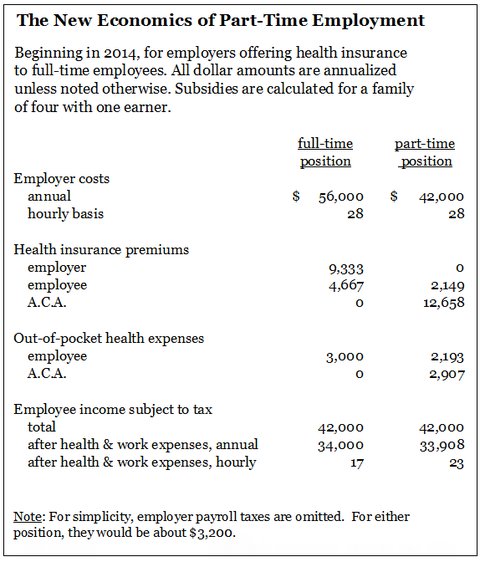
However, it is not hard to find an entity that uses both solar energy and electricity. Meanwhile, monopolistic and oligopolistic competition markets face imperfect substitution. Producers can differentiate their offers, for example, through branding and advertising. Through this differentiation, companies can charge prices higher than market prices. Another reason that supports the substituted goods over the original good is those substitute goods usually offer better quality to the consumers.
When the two goods are developed with similar technology or contain the same ingredient, serve the same purpose and their price is approximately equal, they are called Substitutes. In such a case, an increase in the price of examples of substitute goods the product leads to an increase in the quantity demanded of its substitutes. If substitute products are highly differentiated and are of high quality, a consumer is likely to switch to a product that offers better quality.
Example of a substitute good
Therefore, there is an inverse relationship between the price of a particular commodity and demand for its complementary item, while other things remain constant. And because the cross elasticity of demand between them is negative, the demand curve is downward sloping. Every business faces some form of competition, even monopoly industries.
- For example, if the price of a Domino’ pizza rises by 1%, the quantity demanded of the Domino’s pizza would fall by more than 1%.
- The availability of substitutes are one of Porter’s 5 Forces, the others being competition, new entrants into the industry, the power of suppliers, and the power of customers.
- Consumers will choose the cheaper one when two goods replace each other.
- Less perfect substitutes are sometimes classified as gross substitutes or net substitutes by factoring in utility.
- A substitute good is any product or service that replaces another product or service with little to no noticeable difference to the consumer.
- Essentially, it is a product or service that is used in place of another.
However, this works against the welfare of the consumer, as it sometimes leads to the production of low-quality products. A high change in its substitute price has little effect on the demand for a product. In addition to the price change, another factor that affects substitute items is quality. If the Substitute goods are of different quality, then an increase in the price of the Substitute good will not have a significant effect on the demand for the good in question.
For example, when a person buys a specific brand of facial cream but the store is out of stock, and at that moment they choose the store brand instead. In cases of perfect competition, perfect substitutes are sometimes conceived as nearly indistinguishable goods being sold by different firms. For example, gasoline from a gas station on one corner may be virtually indistinguishable from gasoline sold by another gas station on the opposite corner.
What are Substitute Goods?
On a micro level, growth in income can also impact consumer behavior. For example, as their income increases, consumers may start buying more lean cuts of steak instead of less expensive options. As incomes rise, the price of a good becomes less of a factor when considering substitute goods. On the other hand, an indirect substitute is a situation where two goods can be replaced by each other, but with a low level of correlation.
Direct Substitute Goods are similar enough to serve as a substitute. Two goods are direct substitutes if an increase in the price of one leads to an increase in the demand for the other. For example, if the price of good A rises, then consumers will purchase more of good B. Substitute goods are important in economic analysis because they help determine the demand for a good.
Substitution and Cross Elasticity of Demand
Considering the above, when two goods are substitutes, it is expected that when the price of one of the goods increases, the demand for its substitute will increase. This occurs because the consumer replaces the relatively more expensive good with the cheapest. In economic terms this relationship is called positive cross elasticity of demand. Furthermore, imperfect substitutes (whether close or weak substitutions) do not have equal utility as original goods.
Monopolistic competition presents an interesting case that present complications with the concept of substitutes. In monopolistic competition, companies are not price-takers, meaning demand is not highly sensitive to price. A common example is a difference between the store brand and name-branded medicine at your local pharmacy. It means that as the price of product x rises, the demand for the other product rises. As seen in the graph above, when the price of tea increases, the quantity demanded of coffee also increases. Since indirect substitutes are not very common, they tend to have a weak correlation, which results in a low cross-elasticity of demand.
What Are Substitute Goods?
The Substitute goods a consumer is willing and able to purchase affect the demand for the good in question. If the Substitute goods are close substitutes, then an increase in the price of the Substitute good will lead to a decrease in the demand for the good in question. Those are the basics of substitute goods, cross elasticity of demand, and the substitution effect. When consumers make buying decisions, substitutes provide them with alternatives. Substitutes occur when there are at least two products that can be used for the same purpose, such as an iPhone vs. an Android phone.
These careers had the highest pay bumps, while others fell behind – ABC17News.com
These careers had the highest pay bumps, while others fell behind.
Posted: Tue, 08 Aug 2023 17:12:23 GMT [source]
There are two main reasons why a consumer would need to find a substitute good. Adam Hayes, Ph.D., CFA, is a financial writer with 15+ years Wall Street experience as a derivatives trader. Besides his extensive derivative trading expertise, Adam is an expert in economics and behavioral finance. Adam received his master’s in economics from The New School for Social Research and his Ph.D. from the University of Wisconsin-Madison in sociology. He is a CFA charterholder as well as holding FINRA Series 7, 55 & 63 licenses. He currently researches and teaches economic sociology and the social studies of finance at the Hebrew University in Jerusalem.
Substitute Goods: Definition, Types and Examples
This means that such goods are used in conjunction with one other, which enhances their value. In other words, these goods have no value when they are consumed alone. The consumer looking to sweeten his tea or prepare a cake can use one or the other interchangeably. Both fulfill the same function although their physical characteristics are different.

On the same note, you can switch from one pen to the other easily since the switching costs are low. When a consumer wants to move from Madrid to Frankfurt, they can do so by plane, train, vehicle, etc. All the alternatives fulfill the same function, although in a different way.
If any of these factors change, substitute goods can become relevant. If someone doesn’t have access to a car they can travel by bus or bicycle. Substitute goods are two or more products that the consumer can use for the same purpose. Substitute goods can either fully or partly satisfy the same needs of the customers. Substitute goods are alternative goods that satisfy the same need or want for the consumer as the primary good.
A 1% increase in the price of good A would lead to a more than 1% decline in the quantity demanded of good A. A perfect substitute can be used in exactly the same way as the good or service it replaces. This is where the utility of the product or service is pretty much identical. For example, a one-dollar bill is a perfect substitute for another dollar bill.

Conversely, if the substitute items are not close substitutes, then an increase in the price of the Substitute good will not have a significant effect on the demand for the good in question. The demand curve for a substitute product is shifted to the right when the price of the other product increases. Cross elasticity of demand means how much quantity of one product will be demanded if the price changes as compared to its substitute. The main difference between the two vehicles is that they are made by different manufacturers. Ford and Chevy are substitute products because they serve the same purpose but differ in form or function.
